Photo: Rich Fury/Getty Images for The Recording Academy
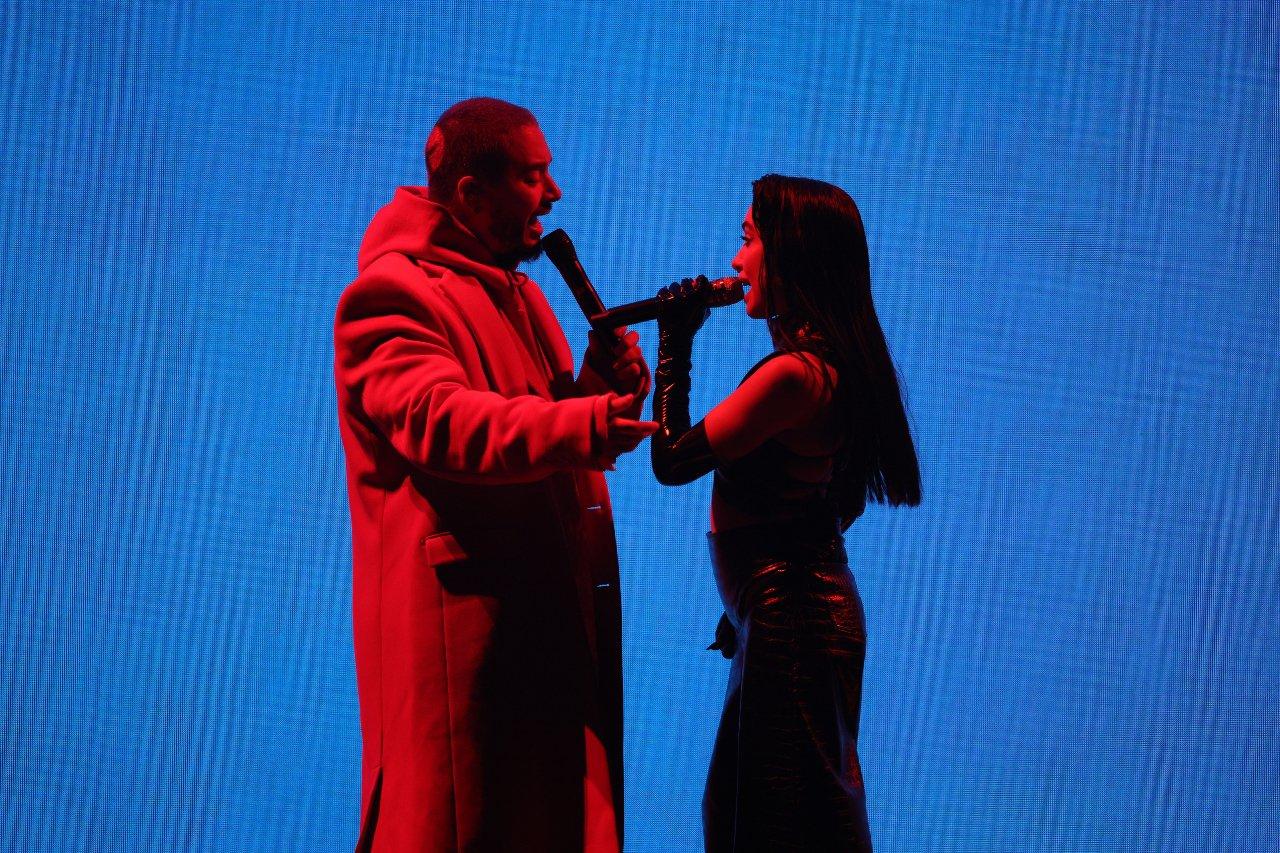
news
Rewatch Every Performance At The 2022 GRAMMYs: BTS, Silk Sonic, Olivia Rodrigo & More
From BTS to John Legend to Lady Gaga and beyond, revisit every performance from the 2022 GRAMMYs — and catch up on those artists' wins and nominations — during Music's Biggest Night
At the very performance-heavy 2022 GRAMMYs, returning host Trevor Noah perhaps summed it up best. "Don't think of this as an award show," he stressed. "It's a concert where we are giving out awards."
True to his words, the all-killer-no-filler ceremony gave music lovers nothing but nourishment, eschewing extraneous bits to let the performers shine. And when the ceremony took a break from performances, it did for very good reasons — like to play a gripping speech from Ukrainian president Volodymyr Zelensky, or pay tribute to fallen Foo Fighters drummer Taylor Hawkins.
You can find complete coverage of those events and more at GRAMMY.com, but for now, it's time to shine a spotlight on the performers themselves. Below, rewatch every performance from the 2022 GRAMMYs and catch up on those artists' wins and nominations during Music's Biggest Night.
Silk Sonic Performed "777"
The soulful duo of Bruno Mars and Anderson .Paak kicked things off with a funky version of their fittingly Vegas-inspired track "777." At the 2022 GRAMMYs, Silk Sonic were nominated for GRAMMYs for Record Of The Year, Song Of The Year, Best R&B Performance, and Best R&B Song — all for "Leave the Door Open" — and won in all four categories. Click here to watch it on Facebook.
Olivia Rodrigo Performed "Drivers License"
Rodrigo performed her signature song — well, so far — partly in an onstage Mercedes. She was nominated in seven categories and won GRAMMYs for Best New Artist, Best Pop Vocal Album (SOUR) and Best Pop Vocal Performance ("drivers license"). Click here to watch it on Facebook.
Read More: The Meteoric Rise Of Olivia Rodrigo: How The "Drivers License" Singer Became Gen Z's Queen of Pop
J Balvin Performed "Qué Más Pues?" & "In Da Ghetto"
Together with Argentine singer Maria Becerra, the Colombian singer/rapper performed their joint single "Qué Más Pues?" before flying solo for "In Da Ghetto." Click here to watch the video on Facebook.
BTS Performed "Butter"
K-pop heroes BTS went full James Bond for their rendition of their hit 2021 single, “Butter.” There was even some magic involved: While milling through the crowd mid-performance, V produced a card from behind Olivia Rodrigo's ear. Click here to watch the video on Facebook.
Read More: Smooth Like "Butter": How BTS' GRAMMY-Nominated Mega Hit Came To Be
Lil Nas X Performed "Dead Right Now," "Montero (Call Me by Your Name)" & "Industry Baby”
The "Old Town Road" star performed three cuts from his 2021 album Montero, with rapper Jack Harlow joining him for an electric rendition of their collaboration, "Industry Baby." Click here to watch the video on Facebook.
Billie Eilish & FINNEAS Performed "Happier Than Ever"
True to the ever-swelling "Happier Than Ever," Eilish and FINNEAS performed the tune first in a waterlogged house, then on a rooftop during a storm. Click here to watch the video on Facebook.
**Read More: Billie Eilish's Road To Happier Than Ever: How The Superstar Continues To Break Pop's Status Quo**
Brandi Carlile Performed "Right On Time"
Carlile performed a ruminative version of her heart-tugging song "Right On Time," from In These Silent Days.
Nas Performed "I Can," "Made You Look," "One Mic," & "Rare"
The legendary MC performed a career-spanning medley featuring a brass section and four-time GRAMMY winner Robert Glasper on piano. Click here to watch the video on Facebook.
Chris Stapleton Performed "Cold"
The very bearded country hero performed "Cold," from his 2020 album Starting Over. Stapleton was nominated for GRAMMYs for Best Country Solo Performance ("You Should Probably Leave"), Best Country Song ("Cold") and Best Country Album (Starting Over), and won in all three categories. Click here to watch the video on Facebook.
John Legend Performed "Free"
After a riveting, pre-taped speech by Ukrainian president Volodymyr Zelensky about choosing sound over silence, truth over lies and peace over war, 12-time GRAMMY winner John Legend performed a touching song, "Free," which sampled pieces of the spiritual "Go Down Moses."
As the performance went on, Legend was joined by three Ukrainian artists: bandura player Siuzanna Iglidan, singer Mika Newton and poet Lyuba Yakimchuk. Click here to watch the video on Facebook.
Lady Gaga Performed "Love for Sale" & "Do I Love You"
Tony Bennett may have retired from performing at 95, but his presence was keenly felt at the 2022 GRAMMYs. He bowed out with 2021's excellent Love for Sale, his second collaborative album with Lady Gaga — and Gaga did Bennett justice with a lavish tribute.
The pair’s second collaborative album, Love For Sale, won Best Traditional Pop Vocal Album — their second win in the category, following their 2015 victory for Cheek To Cheek. Click here to watch the video on Facebook.
Jon Batiste Performed "Freedom"
The pianist and multi-hyphenate celebrated his 11 nominations at the 2022 GRAMMYs with a vibrant version of "Freedom" from his 2021 album WE ARE.
Out of those 11, Batiste won GRAMMYs for Album Of The Year (WE ARE), Best American Roots Performance, Best American Roots Song ("Cry"), Best Music Video ("Freedom"), and Best Score Soundtrack For Visual Media (Pixar's Soul). Click here to watch the video on Facebook.
Justin Bieber Performed "Peaches"
Building from a sparse piano ballad to full-blown R&B jam session alongside collaborators Giveon and Daniel Caesar, Bieber thrilled the 2022 GRAMMYs stage with his top-down Justice hit "Peaches." Click here to watch the video on Facebook.
H.E.R. Performed "Damage," "We Made It" & Lenny Kravitz's "Are You Gonna Go My Way"
With assistance from Lenny Kravitz, Travis Barker, Jimmy Jam, and Terry Lewis, H.E.R. performed two originals and a Kravitz jam.
H.E.R. took home her fifth golden gramophone this year, winning the GRAMMY for Best Traditional R&B Performance for "Fight For You." Click here to watch the video on Facebook.
Carrie Underwood Performed "Ghost Story"
The 2022 GRAMMYs ended with two country luminaries, starting with Carrie Underwood, who performed "Ghost Story." The superstar won her eighth GRAMMY — but her first in the Best Roots Gospel Album category — for her gospel project, My Savior. Click here to watch the video on Facebook.
Brothers Osborne Performed "Dead Man's Curve"
Last but certainly not least, Brothers Osborne played "Dead Man's Curve." (Their last GRAMMYs appearance was back in 2018, when they performed a tribute to the victims of the Route 91 Harvest Festival shooting in Las Vegas a year prior.)
After scoring nine nominations since 2016, Brothers Osborne won their first GRAMMY in 2022. Their poignant single "Younger Me" was awarded the GRAMMY for Best Country Duo/Group Performance. Click here to watch the video on Facebook.
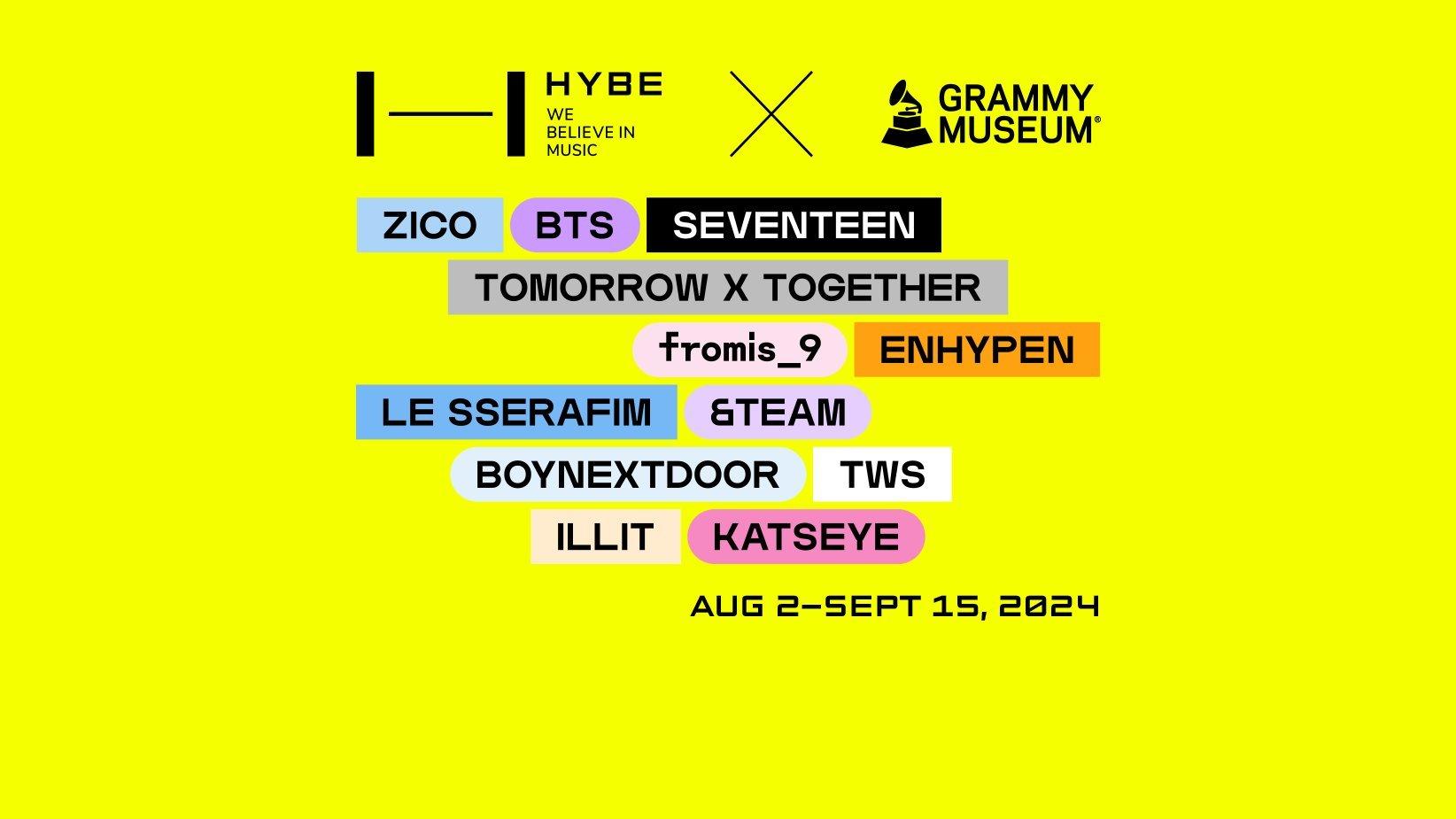
Graphic courtesy of the GRAMMY Museum
news
GRAMMY Museum Partners With HYBE For New K-Pop Exhibit 'HYBE: We Believe In Music' Opening Aug. 2
Running Aug. 2 through Sept. 15, the GRAMMY Museum exhibit showcases artifacts from superstar HYBE artists, including BTS, SEVENTEEN, TOMORROW X TOGETHER, ENHYPEN, LE SSERAFIM, and many more.
The GRAMMY Museum joins forces with HYBE to present its newest exhibit, HYBE: We Believe In Music, A GRAMMY Museum Exhibit. This interactive exhibit chronicles the history and impact of HYBE, and showcases its legacy of unparalleled innovation and creativity as a trend-setting global entertainment brand.
The exhibit opens on Aug. 2 in downtown Los Angeles and features spotlight moments with K-pop stars BTS, SEVENTEEN, TOMORROW X TOGETHER, ENHYPEN, LE SSERAFIM, and many more. "HYBE: We Believe In Music" runs through Sept.15. The exhibit will kick off on Aug. 1 with "Global Spin Live: TWS," a program featuring a moderated conversation with K-pop group TWS, followed by a performance.
The exhibit traces HYBE's evolution and influence by showcasing instantly recognizable artifacts from its roster of artists, creators, and fans. The displays notably feature original outfits worn in iconic music videos such as "Yet To Come (The Most Beautiful Moment)" by BTS, "MAESTRO" by SEVENTEEN, "Sugar Rush Ride" by TOMORROW X TOGETHER, "Sweet Venom" by ENHYPEN, and "EASY" by LE SSERAFIM. HYBE: We Believe In Music also boasts accessories and performance gear donned by ZICO, fromis_9, BOYNEXTDOOR, TWS, &TEAM, and ILLIT. The exhibit marks the first time these artifacts will be on display together in one location.
Other highlights include interactive sing-along and dance rooms, a dedicated Fan Section celebrating the endless support between HYBE artists and their fandoms, a Mono to Immersive room featuring BTS's 2022 GRAMMYs performance of "Butter," and a Photoism Booth that allows visitors to pose alongside their favorite K-pop artists. The GRAMMY Museum exhibit will also feature exclusive video content with producers, artists, music videos, and more.
"HYBE and their artists represent the present and future of the global music landscape, and our goal with this exhibit is to deepen the appreciation and respect for its creators and performers," says Michael Sticka, President/CEO of the GRAMMY Museum. "HYBE has contributed to creating a playground of innovation that inspires fandoms that transcend age, gender, geography and beyond. The GRAMMY Museum is thrilled to provide a space where fans can express their love for K-pop and feel closer to their favorite idols."
Read more: 11 Rookie K-Pop Acts To Know In 2024: NCT Wish, RIIZE, Kiss Of Life & More
HYBE Chief Operating Officer Taeho Kim added, "Putting out an exhibition that captures HYBE's journey is a new experience for us. We're very excited about this partnership with GRAMMY Museum, and we look forward to welcoming music fans who visit the museum to enjoy and connect with our historical pieces."
The exhibit highlights the roots of HYBE's meteoric rise. In 2005, South Korean producer, composer, and songwriter Bang Si-Hyuk, known as "hitman" Bang, changed the trajectory of Korean pop music by launching the record label Big Hit Entertainment. He soon signed a talented 16-year-old rapper named RM, which became the first step in creating the label's groundbreaking boy band — BTS. With the group's global success, "hitman" Bang and Big Hit Entertainment became known as musical trailblazers and record industry innovators. Big Hit Entertainment has now evolved into HYBE, which only continues to break boundaries in music and beyond.
More K-Pop News

NCT 127 Essential Songs: 15 Tracks You Need To Know From The K-Pop Juggernauts
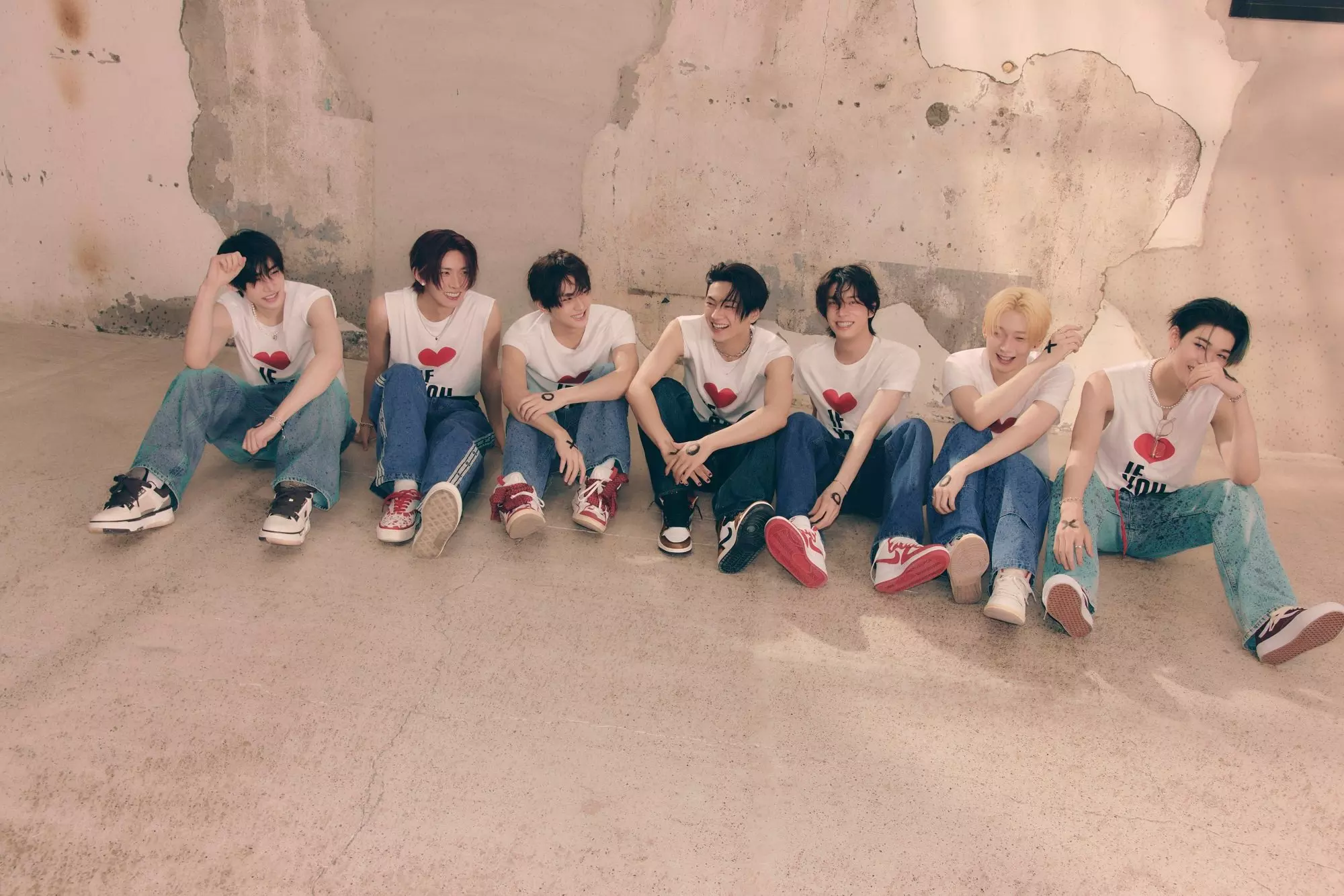
ENHYPEN And JVKE "Say Yes" To Cross-Cultural Collabs & Exploring New Genres
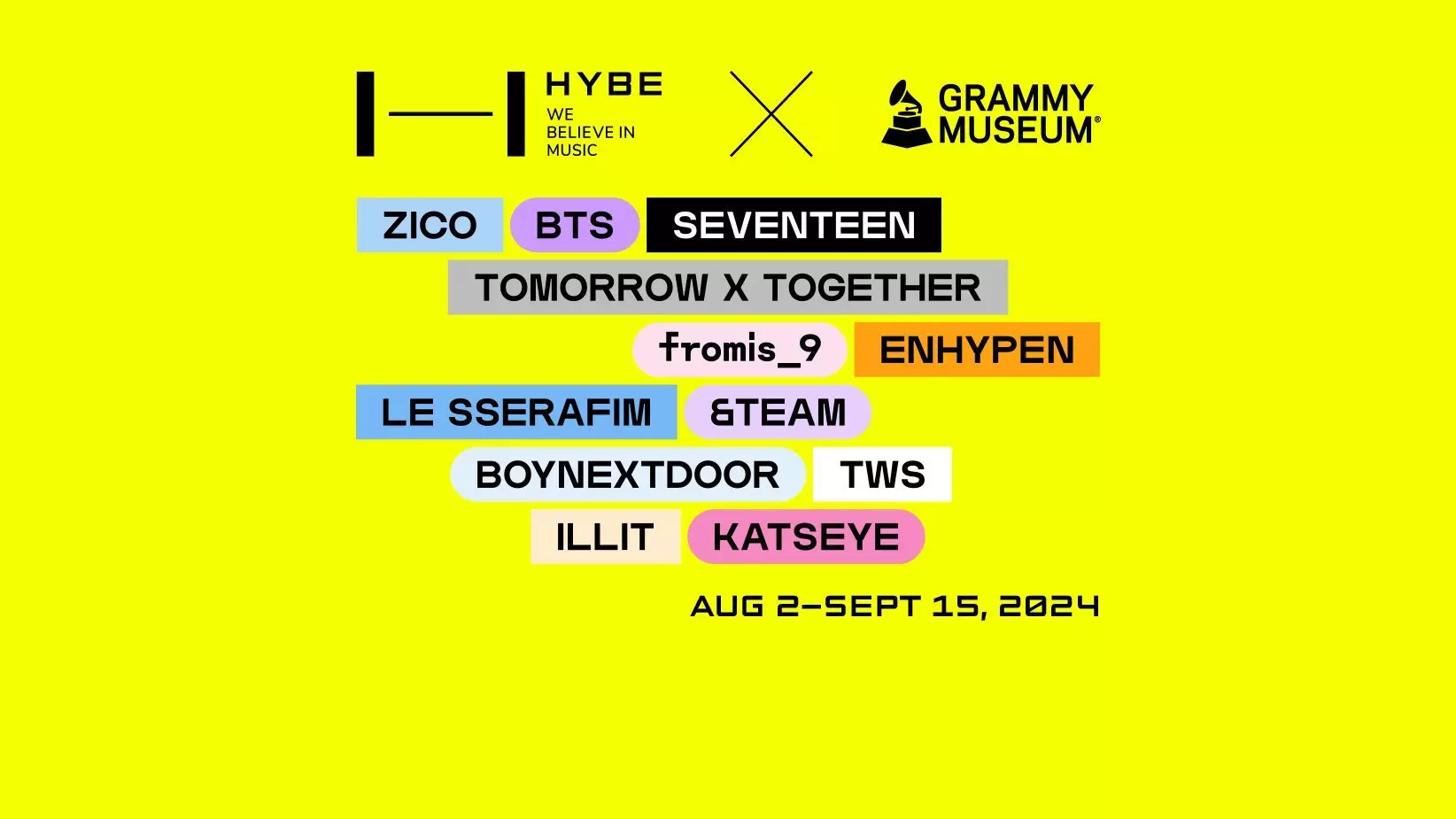
GRAMMY Museum Partners With HYBE For New K-Pop Exhibit 'HYBE: We Believe In Music' Opening Aug. 2

K-Pop Group RIIZE Detail Every Track On New Compilation 'RIIZING – The 1st Mini Album'

The ABCDs Of Nayeon: How The TWICE Member Embraced Her Authenticity On ‘NA’
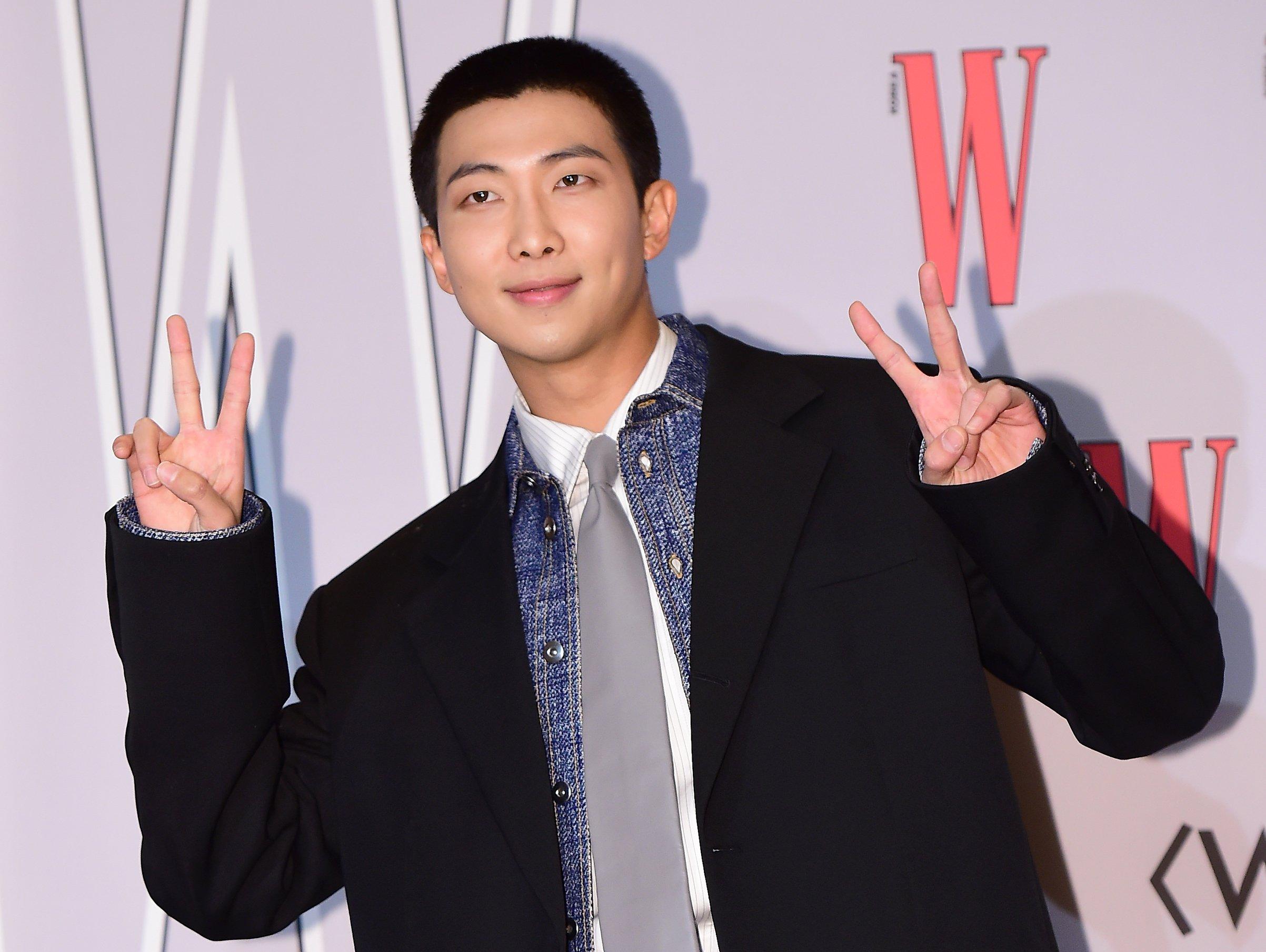
Photo: The Chosunilbo JNS/Imazins via Getty Images
news
Stream RM's New Album 'Right Place, Wrong Person': See The Tracklist, "LOST!" Video & Special Guests
The second solo album from BTS' RM further displays his knack for genre-bending experimentation, while also delving deeper into his vulnerable side. Listen to the new album here, and get to know the project's featured artists, tracklist and more.
As the world patiently awaits the return of BTS in full force, each member continues to deliver solo projects to show off their individual talents. And 18 months after his last album, RM is back.
With a discography that hops between pop, R&B, and hip-hop, RM returns to the spotlight with his second solo album, Right Place, Wrong Person. The project tells the relatable story of an individual who is a creature of habit, but slowly comes to find solace in foreign spaces.
Below, listen to RM's latest album, and discover more about how he's revealing a new side of his artistry with Right Place, Wrong Person.
The Tracklist
After RM's debut solo album, 2022's Indigo, had 10 tracks (including features from the likes of Erykah Badu, Anderson .Paak), he ups the tally with an 11-song tracklist this time around.
Here is the complete tracklist for Right Place, Wrong Person:
1. Right People, Wrong Place
2. Nuts
3. out of love
4. Domodachi (feat. Little Simz)
5. ? (Interlude)
6. Groin
7. Heaven
8. LOST!
9. Around the world in a day (feat. Moses Sumney)
10. ㅠㅠ (Credit Roll)
11. Come back to me
The Creative Visuals
Two weeks before the album dropped, he unveiled the music video for "Come Back to Me," the lead single from Right Place, Wrong Person. Directed by the critically acclaimed actor Lee Sung Jin, the music video narrates the tale of feeling like an outsider and yearning for a sense of belonging in unfamiliar surroundings.
Then, on the day Right Place, Wrong Person arrived, RM added to release-day excitement with another intriguing visual, this time for "LOST!" The five-minute clip sees RM as the star of "The Lost! Show," where he and a group endure an eerie whirlwind of scenarios they can't seem to get out of. It's equal parts dramatic and slapstick, and another clever display of RM's creative versatility.
Noteworthy Guests
The featured artists on Right Place, Wrong Person — British rapper Little Simz on "Domodachi" and art-pop artist Moses Sumney on "Around the world in a day" — underscore RM's ability to interlace his own musical style with artists from various genres.
The album also has some notable behind-the-scenes collaborators as well. Production credits include Kim Han-joo, keyboardist and vocalist from the South Korean rock band Silica Gel, on "LOST!" and GRAMMY-nominated jazz duo DOMi & JD Beck on "? (Interlude)."
On "Come back to me" — which RM initially debuted last August during a surprise performance at BTS bandmate Suga's encore concert in Seoul — he delves into the album's central theme of wanting to venture into unknown areas, but feeling the intense urge to stay with what's already known. The track was composed and arranged by OHHYUK from the South Korean indie-rock band Hyukoh, but also features credits from artists Kuo, JNKYRD, and San Yawn.
But no matter who RM is working with, his own talent and prowess as a creator always shines. Right Place, Wrong Person presents a diverse array of tracks marked by sheer vulnerability, honesty, and sensitivity — a masterful continuation of a remarkable solo journey.
K-Pop Summer 2024 Guide: ATEEZ, IU, TXT & More Live In Concert & On Tour
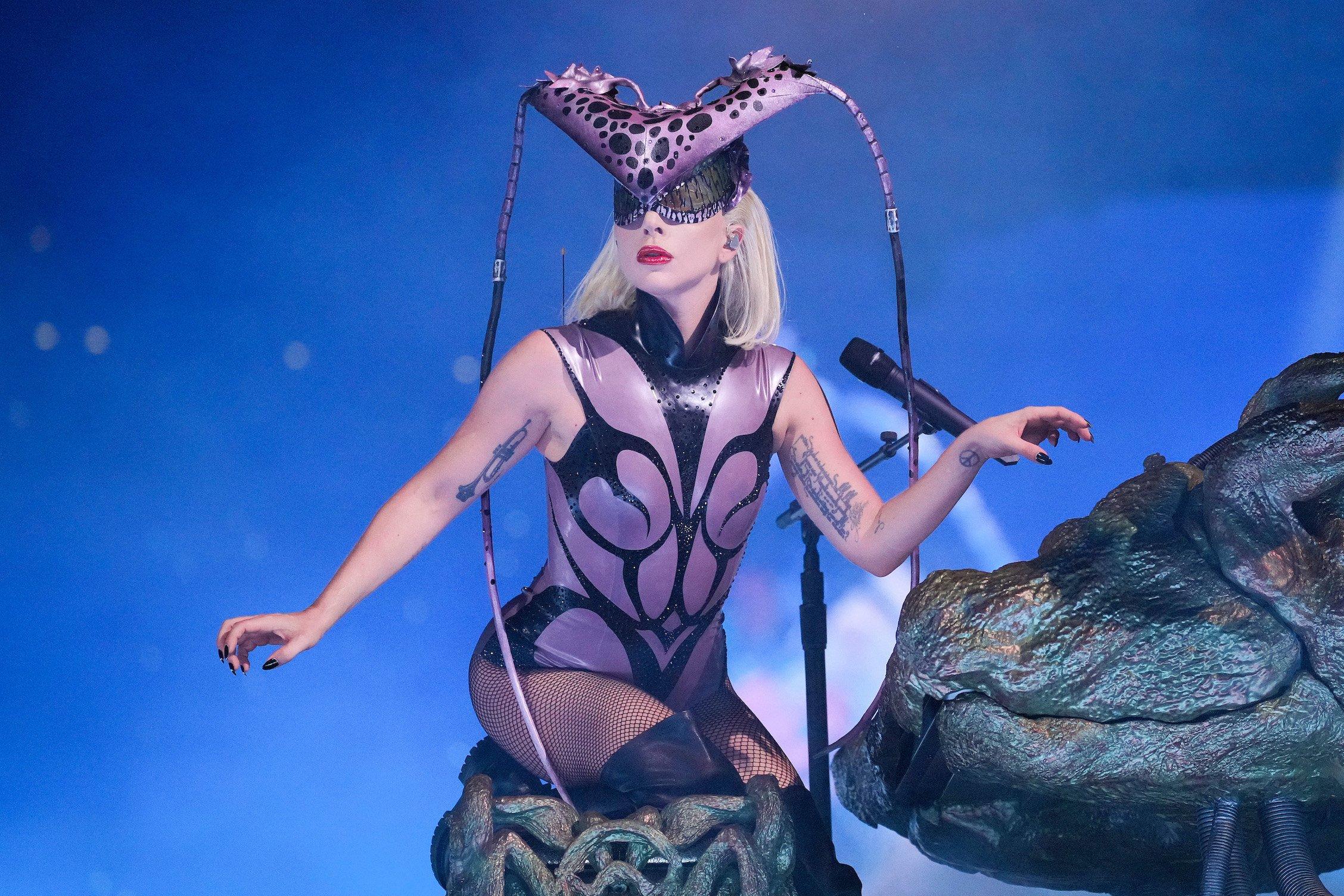
Photo: Kevin Mazur/Getty Images for Live Nation
list
Lady Gaga's Biggest Songs: 15 Tracks That Show Her Avant-Garde Pop Prowess
As fans relive the exhilarating spectacle of Lady Gaga's 2022 stadium tour with a new HBO Max concert film, 'GAGA CHROMATICA BALL,' jam out to 15 of her signature songs, from "Poker Face" to "Rain on Me."
Nearly two years after bringing her 2020 album Chromatica to life with a sold-out stadium tour, Lady Gaga is bringing The Chromatical Ball to your living room. GAGA CHROMATICA BALL, an HBO Original special that premieres May 25 exclusively on MAX, will take Little Monsters into the mesmerizing, colorful world the 13-time GRAMMY winner crafted with her sixth studio set.
The Chromatica Ball was a joyful cultural triumph as the world emerged from lockdown, hitting 20 stadiums across Europe, North America and Asia in the summer of 2022. While it was named after Chromatica and featured the majority of the dance-driven album's track list — including the smash Ariana Grande duet, "Rain On Me," and lead single "Stupid Love" — the tour was a celebration of the breadth of her acclaimed career as a whole, which has spanned decades, genres, styles, and entire industries.
GAGA CHROMATICA BALL documents Lady Gaga's sold-out September 2022 show at Dodger Stadium in Los Angeles, which was one of the biggest venues on the tour. Showcasing a stage inspired by brutalist architecture and a set list stretching from the pop star's 2008 debut album, The Fame, to her Top Gun: Maverick track, "Hold My Hand," the film will also take fans inside the raw passion Gaga brings to each and every live show.
In celebration of the concert film, GRAMMY.com revisits 15 of Gaga's most career-defining songs to date, from early hits like "Poker Face" to stunning deep cuts like Chromatica's "Free Woman."
"Just Dance" (feat. Colby O'Donis), The Fame (2008)
Lady Gaga burst onto the scene in 2008 with a fully realized point of view and pop star persona, but her debut single actually wasn't an immediate smash on the charts. Instead, "Just Dance" served as the sleeper hit that kick-started Gaga's legendary career, landing at the precipice of the Billboard Hot 100 after a 22-week climb from its initial entry at No. 76 to the nascent pop star her very first No. 1 hit.
A polished dance floor banger produced by RedOne and co-written with Akon, "Just Dance" perfectly crystallizes the dance-pop resurgence of the late 2000s that Gaga not only helped spearhead, but masterfully rode into the upper echelon of 21st century pop stardom. Notably, the song also earned Gaga the first GRAMMY nomination of her career for Best Dance Recording in 2009 — a full year before her debut album would announce itself as a major force at the 2010 ceremony.
"Poker Face," The Fame (2008)
If "Just Dance" set expectations sky high for the music Gaga had up her well-manicured sleeve, "Poker Face" majorly surpassed them — and subsequently, became one of the defining pop songs of the decade. With its relentless rhythm, sing-song "Po-po-po-poker face, po-po-poker face" refrain, and winkingly naughty lyrics ("'Cause I'm bluffin' with my muffin," anybody?), the song proved Gaga knew how to expertly construct an earworm while delivering a high-concept visual spectacle in spades.
"Poker Face" became the singer's second consecutive No. 1 single on the Hot 100, marking the first time a brand-new artist had accomplished the feat since Christina Aguilera's one-two punch of "Genie in a Bottle" and "What a Girl Wants" a full decade prior. By year's end, "Poker Face" had become top-selling single of 2009 across the globe, and the following year, it earned Gaga her first nods for both Song Of The Year and Record Of The Year at the 2010 GRAMMYs, with The Fame also being nominated for Album Of The Year.
Though the song and LP ultimately lost in the major categories, they respectively took home the golden gramophones for Best Dance Recording and Best Electronic Dance Album, officially making Gaga a GRAMMY-winning artist after less than two years in the industry.
"The Fame," The Fame (2008)
While it was never released as an official single, the title track off Gaga's 2008 debut album serves as something of an early thesis statement for the avant garde star who so confidently declared, "POP MUSIC WILL NEVER BE LOWBROW" as she burst from New York City's underground scene to the global stage.
Gaga lays bare her ambitions with brazen clarity on the punchy electronic track, as she gushes over her single-minded love for "runway models, Cadillacs and liquor bottles" and sings, "Give me something I wanna be/ Retro glamor, Hollywood, yes we live for the fame/ Doin' it for the fame/ 'Cause we wanna live the life of the rich and famous." Later on the song's bridge, the pop star vows, "Don't ask me how or why/ But I'm gonna make it happen this time," and in retrospect, there's no denying Gaga accomplished everything she set out to achieve at the start of her career.
"Bad Romance," The Fame Monster (2009)
The Fame heralded Gaga as the next big thing in pop music. But rather than spend a couple years fine-tuning her follow-up, the newly minted star decided to double down while the iron was red hot by reissuing the album as The Fame Monster, complete with eight new songs. And in doing so, she catapulted herself to superstar status with just five syllables: "Ra-ra-ah-ah-ahh."
If the Gaga of "Just Dance" and "Poker Face" was a flashy striver fighting her way to the center of the cultural zeitgeist, "Bad Romance" presented Gaga as a high-fashion pop queen ready to turn her coronation into a victory lap. Not only did "Bad Romance" score Gaga her fifth consecutive top 5 hit on the Billboard 200, it also won her the GRAMMYs for Female Pop Solo Performance and Music Video/Short Form in 2011. (The Fame Monster, meanwhile, took home the golden gramophone for Pop Vocal Album — the first of Gaga's four nominations and counting in the category.)
"Telephone" (featuring Beyoncé), The Fame Monster (2009)
"Hello, hello, baby, you called, I can't hear a thing…" On its face, "Telephone" may sound like a garden variety electro-pop bop, but Gaga turned the track into an unforgettable club banger of the highest order by recruiting the one and only Beyoncé. The two superstars play off one another with panache as they shrug off responsibility and incessant calls from home in favor of giving into the music.
The single's murderous, Jonas Åkerlund-directed visual remains one of the most iconic in Gaga's storied visual history. Fourteen years after Gaga and Honey B drove off in the Pussy Wagon with the promise to never come back, Little Monsters and the Beyhive are still clamoring for a follow-up. Need proof? Just look at the internet frenzy Queen Bey caused when she appeared driving a similarly hued taxi in a teaser for the album that became COWBOY CARTER earlier this year.
"Born This Way," Born This Way (2011)
Almost from the moment she emerged onto the national consciousness, Gaga was considered a gay icon in the making, proudly advocating for the queer community — and in turn, cultivating a passionate, devoted LGBTQ+ fan base who worshiped at the feet of Mother Monster. So, naturally, she used her 2010 sophomore album to gift the masses with the Pride anthem of a generation.
Drawing comparisons to Madonna's "Express Yourself," "Born This Way" became a defining hit of the 2010s and helped empower listeners from the clubs, to the streets, to the inside of the closet to embrace what makes them special and fearlessly declare, "Baby, I was born this way!" Additionally, the gay anthem holds the distinction of being the 1,000th No. 1 hit in the history of the Billboard Hot 100, as well as Gaga's first single to bow at the top of the chart upon its debut.
"Yoü And I," Born This Way (2011)
Though she would go on to explore the genre further in 2016's Joanne, Gaga pretty much perfected her interpretation of classic Americana with the country-rock stomp of "Yoü and I" in 2011. Released as the fourth single from Born This Way, the gutsy power ballad found the singer driving a muscle car right through the glitzy, electro-pop aesthetic of her past as she wailed, "This time I'm not leavin' without you" over a sample of Queen's "We Will Rock You" and an original electric guitar line by none other than Brian May himself.
The music video for "Yoü And I," meanwhile, was classically high-concept in the most Gaga of terms. It saw the star transform into a number of alter egos including Yüyi the mermaid and the snarling, chain-smoking Jo Calderone. Whether running through the Nebraska cornfields of the song's setting or being brought back to life a la bride of Frankenstein by future ex-fiancé Taylor Kinney, Gaga proved that she could make a visit to America's heartland as avant-garde as ever.
"Marry The Night," Born This Way (2011)
Among Born This Way's litany of hits, "Marry the Night" is widely regarded among Little Monsters as something of a cult favorite. Though it didn't ascend quite as high up the charts as preceding singles like "Judas" or "The Edge of Glory," the track's music video might just be the most autobiographical visual the New York City native has ever released.
As the fantastical clip opens on an unconscious Gaga lying prone in a hospital bed wearing "next season Calvin Klein" and custom Giuseppe Zanoti, the singer lays out her entire approach to her artistry. "When I look back on my life, it's not that I don't want to see things exactly as they happened, it's just that I prefer to remember them in an artistic way," she explained. "And truthfully, the lie of it all is much more honest because I invented it…
"It's sort of like my past is an unfinished painting," she continues. "And as the artist of that painting, I must fill in all the ugly holes and make it beautiful again. It's not that I've been dishonest; it's just that I loathe reality." Gaga's rejection of the ordinary in favor of artistic reinterpretation has given fans not only the creative explosion of "Marry the Night," but the entirety of the pop star's avant-garde oeuvre.
"The Lady Is a Tramp" (with Tony Bennett), Duets II (2011)
Smack dab in the middle of Gaga's Born This Way era, Tony Bennett invited Gaga to duet on his 2011 album, Duets II. The pair's charming, spunky rendition of the Rodgers and Hart classic "The Lady is a Tramp" not only opened the album, but it showcased an irrepressible chemistry between the two stars that led to two more collaborative full-length albums, 2014's Cheek to Cheek and 2021's Love For Sale — both of which won GRAMMYs for Best Traditional Pop Vocal Album.
The song ultimately became something of a cheeky hallmark to how much Gaga and Bennett adored one another; even after they'd released an album full of jazz standards like Cole Porter's "Anything Goes" and Irving Berlin's "Cheek to Cheek," the young pop ingénue chose to sing "The Lady Is a Tramp" for Bennett's 90th birthday celebration at Radio City Music Hall, dedicating it to her friend as he beamed from the front row.
The pair's sweet friendship would continue on all the way until Bennett's death in 2023 following a years-long battle with Alzheimer's disease. In a heartfelt social media tribute, Gaga shared the impact of Bennett's friendship: "Sure he taught me about music, about showbiz life, but he also showed me how to keep my spirits high and my head screwed on straight."
"Applause," ARTPOP (2013)
She lives for the applause! For the lead single for her 2014 album ARTPOP, Gaga shined a spotlight back on the parasocial relationship and adoration that comes with fame. This time, though, the pop star demands listener participation rather than simple voyeurism as she belts, "Give me that thing that I love/ Put your hands up, make 'em touch!"
In the song, Gaga also shares the complex philosophy behind the album's title ("Pop culture was in art, now art's in pop culture in me.") But between shouting out famed sculpturist Jeffrey Koons (whom she commissioned to create the iconic ARTPOP cover art) and referencing everything from Botticelli's The Birth of Venus to the pop iconography of Andy Warhol in the surrealist music video, Gaga's message was deceptively simple: She lives for the A-P-P-L-A-U-S-E, baby.
"Aura," ARTPOP (2013)
When it came time to present the highbrow themes of ARTPOP to the masses, Gaga chose to open the 2013 iTunes Festival with "Aura," a frenetic exploration of fame, celebrity, suppression and identity built over a skittering sonic palette inspired in equal parts by Middle Eastern music, spaghetti Westerns and mariachi.
Though she initially faced some backlash over accusations that she had appropriated the wearing of a Muslim burqa in the song's lyrics, "Aura" effectively set the stage for ARTPOP as a piece of sophisticated performance art unlike anything Gaga had created before — all while promising fans a glimpse "behind the curtain" at the girl underneath the camp and artistry. And though ARTPOP may have been more than a bit misunderstood at the time of its release, it arguably remains the boldest and bravest album in Gaga's manifold discography.
"Joanne," Joanne (2016)
Gaga found inspiration for her fifth studio album from the life and death of her late aunt (and namesake), Joanne Stefani Germanotta. The singer never met her relative, but Joanne's spirit was imbued throughout the album, from its homespun lyricism to its stripped-back sonic palette that found the singer exploring the sounds of country, soft rock and Americana.
Nowhere on the record is Gaga's profound connection to her aunt more evident than the title track, which she recorded two different versions of and released as the album's third and final single. "Take my hand, stay Joanne/ Heaven's not ready for you/ Every part of my aching heart/ Needs you more than the angels do," she sings softly over a spare piano line on "Joanne (Where Do You Think You're Goin'?)."
With its roots in her family tree, the song clearly holds a special place in Gaga's heart — especially considering she chose to mix it with "Million Reasons" for her performance at the 2018 GRAMMYs. (A full year later, she took home the GRAMMY for Best Pop Solo Performance in 2019 for the acoustic piano version.)
"Shallow" (with Bradley Cooper), A Star Is Born (2018)
"I can see myself in the movies/ With my picture in city lights," Gaga memorably sang in "The Fame." And a decade later, she manifested her dream into reality with a starring role in the 2018 remake of A Star Is Born.
Opposite Bradley Cooper, the singer proved she had plenty of star quality on the silver screen on top of her status as a pop supernova. The movie musical's soundtrack was also dominated by Gaga's vulnerability and vocal abilities, fully giving herself over to the story of a star-crossed love that ends in superstardom and tragedy — particularly on the emotional keystone that is "Shallow." In fact, by the time she lets out her famous, guttural wail in the song's emotional bridge, it's easy to forget that "Shallow" is, in fact, a duet rather than a dazzling showcase of Gaga's chops.
On top of being an essential touchstone in Gaga's canon, "Shallow" is also memorable for being the song that turned Mother Monster into an Oscar winner after she, co-writer Mark Ronson and the rest of their collaborators took home the trophy for Best Original Song at the 2019 Academy Awards. (The song also won a GRAMMY for Best Pop/Duo Group Performance that year.)
"I've worked hard for a long time," Gaga said through tears while accepting her Oscar. "And it's not about winning, but what it's about is not giving up. If you have a dream, fight for it. There's a discipline for passion, and it's not about how many times you get rejected or you fall down or you're beaten up. It's about how many times you stand up and are brave and you keep on going."
"Rain On Me" (with Ariana Grande), Chromatica (2020)
Gaga's Chromatica era began with "Stupid Love" and its colorful, Power Rangers-chic video, but the star hit peak pop excellence by joining forces with Ariana Grande on the album's second single "Rain on Me."
"I'd rather be dry but at least I'm alive/ Rain on me, rain, rain," the two superstars harmonized on the house-fueled disco fantasia's upbeat refrain, before letting the beat drop and giving in to the impulse to dance it out. Released in the early days of the coronavirus pandemic, the track provided hope, joy and a message of hard-fought resilience at a scary, unpredictable and unprecedented time when it felt like the world was ending as we knew it.
The following year, Gaga and Grande won the GRAMMY for Best Pop/Duo Group Performance at the 2011 ceremony, becoming the first female collaborators to take home the award in GRAMMYs history.
"Free Woman," Chromatica (2020)
"Free Woman" was a bit overlooked when it was released as Chromatica's fourth and final single in the spring of 2021, but the narrative Gaga shares on the jubilant track is central to her personal history and experiences in the music industry. Over a thumping Eurodance-leaning beat, she recounts the PTSD she suffered from after being sexually assaulted by an unnamed producer early in her career.
Gaga also offers a rallying cry for her beloved LGBTQ+ fan base on the song, particularly those in the trans community, as she belts, "This is my dance floor I fought for/ Ain't hard, that's what I'm livin' for…We own the downtown, hear our sound." Ultimately, that empowering lyric is a notion that encapsulates the overarching theme of Gaga's career thus far — one that fans around the world can revel in again and again with GAGA CHROMATICA BALL.
Explore The World Of Lady Gaga

Watch Lady Gaga Bring "Born This Way" To Life On The GRAMMYs Stage | GRAMMY Great Performance
For The Record: The Liberating Joy Of Lady Gaga's 'Born This Way' At 10
10 Reasons Why 'ARTPOP' Is Lady Gaga’s Bravest Album

How Lady Gaga Changed The Music Industry With Dance-Pop & Unapologetic Feminism | Run The World
What Is Lady Gaga's Real Name? 7 Facts To Know About The GRAMMY-Winning 'Chromatica' Singer

Watch Lady Gaga Advocate For Mental Health Awareness During Her Win For "Shallow" In 2019 | GRAMMY Rewind
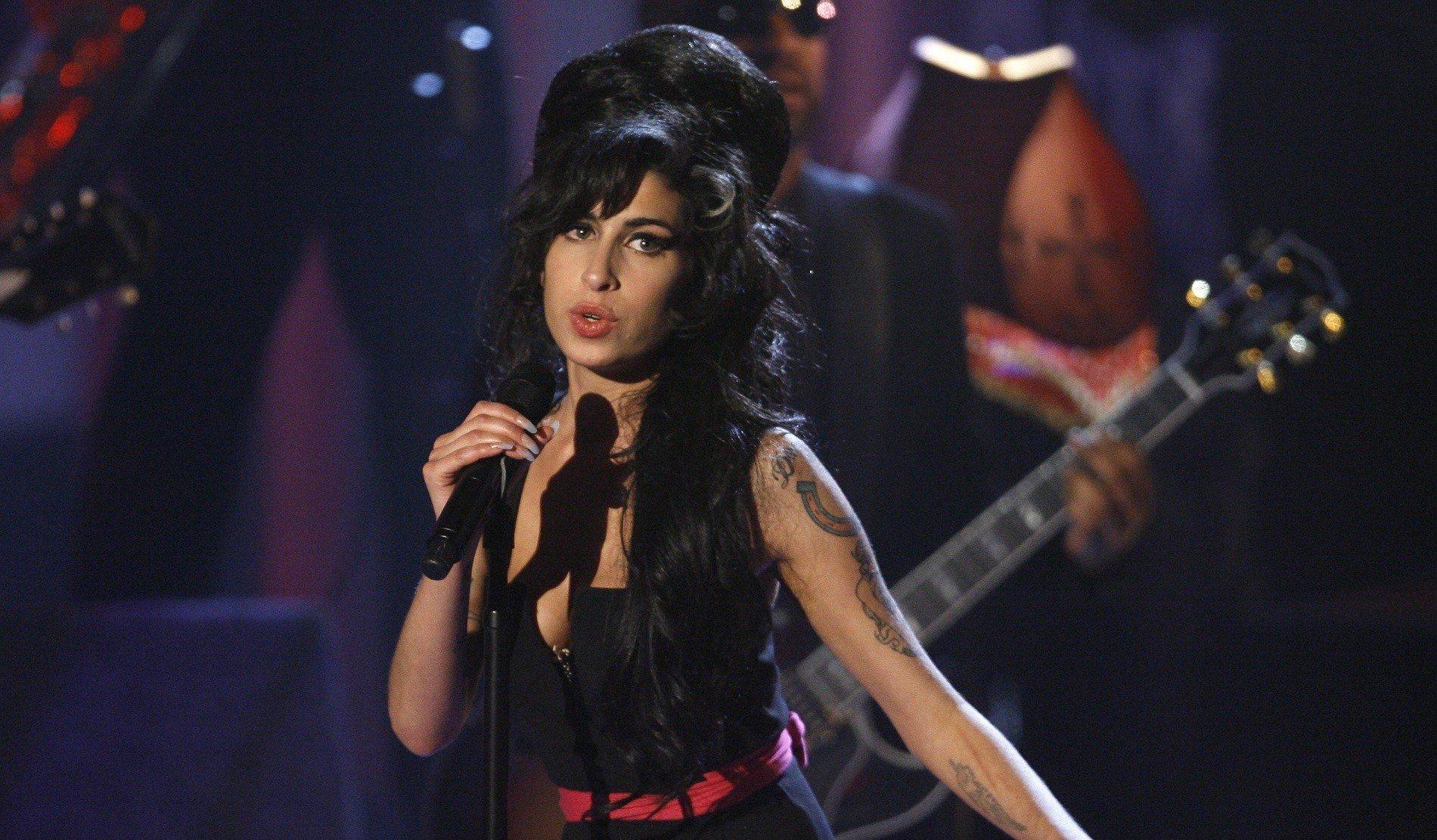
Photo: Chris Polk/FilmMagic
list
How Amy Winehouse's 'Back To Black' Changed Pop Music Forever
Ahead of the new Amy Winehouse biopic 'Back To Black,' reflect on the impact of the album of the same name. Read on for six ways the GRAMMY-winning LP charmed listeners and changed the sound of popular music.
When Amy Winehouse released Back To Black in October 2006, it was a sonic revelation. The beehive-wearing singer’s second full-length blended modern themes with the Shangri-Las sound, crafting something that seemed at once both effortlessly timeless and perfectly timed.
Kicking off with smash single "Rehab" before blasting into swinging bangers like "Me & Mr. Jones," "Love Is A Losing Game," and "You Know I’m No Good," Black To Black has sold over 16 million copies worldwide to date and is the 12th best-selling record of all time in the United Kingdom. It was nominated for six GRAMMY Awards and won five: Record Of The Year, Song Of The Year, Best New Artist, Best Female Pop Vocal Performance, and Best Pop Vocal Album.
Winehouse accepted her golden gramophones via remote link from London due to visa problems. At the time, Winehouse set the record for the most GRAMMYs won by a female British artist in a single year, though that record has since been broken by Adele, who won six in 2011.
Written in the wake of a break-up with on-again, off-again flame Blake Fielder-Civil, Black To Black explores heartbreak, grief, and infidelity, as well as substance abuse, isolation, and various traumas. Following her death in 2011, Back To Black became Winehouse’s most enduring legacy. It remains a revealingly soulful message in a bottle, floating forever on the waves.
With the May 17 release of Sam Taylor-Johnson’s new (and questionably crafted) Winehouse biopic, also titled Back To Black, it's the perfect time to reflect on the album that not only charmed listeners but changed the state of a lot of popular music over the course of just 11 songs. Here are five ways that Back To Black influenced music today.
She Heralded The Arrival Of The Alt Pop Star
When Amy Winehouse hit the stage, people remarked on her big voice. She had classic, old-time torch singer pipes, like Sarah Vaughn or Etta Jones, capable of belting out odes to lost love, unrequited dreams, and crushing breakups. And while those types of singers had been around before Winehouse, they didn’t always get the chance — or grace required — to make their kind of music, with labels and producers often seeking work that was more poppy, hook-packed, or modern.
The success of Back To Black changed that, with artists like Duffy, Adele, and even Lady Gaga drawing more eyes in the wake of Winehouse’s overwhelming success. Both Duffy and Adele released their debut projects in 2007, the year after Back To Black, bringing their big, British sound to the masses. Amy Winehouse's look and sound showed other aspiring singers that they could be different and transgressive without losing appeal.
Before she signed to Interscope in 2007, "nobody knew who I was and I had no fans, no record label," Gaga told Rolling Stone in 2011. "Everybody, when they met me, said I wasn’t pretty enough or that my voice was too low or strange. They had nowhere to put me. And then I saw [Amy Winehouse] in Rolling Stone and I saw her live. I just remember thinking ‘well, they found somewhere to put Amy…’"
If an artist like Winehouse — who was making records and rocking styles that seemed far outside the norm — could break through, then who’s to say someone else as bold or brassy wouldn’t do just as well?
It Encouraged Other Torch Singers In The New Millenium
Back To Black might have sounded fun, with swinging cuts about saying "no" to rehab and being bad news that could seem lighthearted to the casual listener. Dig a little deeper, though, and it’s clear Winehouse is going through some real romantic tumult.
Before Back To Black was released, Fielder-Civil had left Winehouse to get back together with an old girlfriend, and singer felt that she needed to create something good out of all those bad feelings. Songs like "Love Is A Losing Game" and "Tears Dry On Their Own" speak to her fragile emotional state during the making of the record, and to how much she missed Fielder-Civil. The two would later marry, though the couple divorced in 2009.
Today, young pop singers like Olivia Rodrigo, Taylor Swift, and Selena Gomez are lauded for their songs about breakups, boyfriends, and the emotional damage inflicted by callous lovers. While Winehouse certainly wasn’t the first to sing about a broken heart, she was undoubtedly one of the best.
It Created A Bit Of Ronsonmania
Though Mark Ronson was already a fairly successful artist and producer in his own right before he teamed with Winehouse to write and co-produce much of Back To Black, his cred was positively stratospheric after the album's release. Though portions of Back To Black were actually produced by Salaam Remi (who’d previously worked with Winehouse on Frank and who was reportedly working on a follow-up album with her at the time of her death), Ronson got the lion’s share of credit for the record’s sound — perhaps thanks to his his GRAMMY win for Best Pop Vocal Album. Winehouse would even go on to guest on his own Version record, which featured the singer's ever-popular cover of "Valerie."
In the years that followed, Ronson went on to not only produce and make his own funky, genre-bending records, but also to work with acts like Adele, ASAP Rocky, and Paul McCartney, all of whom seemingly wanted a little of the retro soul Ronson could bring. He got huge acclaim for the funk-pop boogie cut "Uptown Funk," which he wrote and released under his own name with help from Bruno Mars, and has pushed into film as well, writing and producing over-the-top tracks like A Star Is Born’s "Shallow" and Barbie’s "I’m Just Ken." To date, he’s been nominated for 17 GRAMMY Awards, winning eight.
Ronson has always acknowledged Winehouse’s role in his success, as well, telling "BBC Breakfast" in 2010, "I've always been really candid about saying that Amy is the reason I am on the map. If it wasn't for the success of Back To Black, no one would have cared too much about Version."
Amy Showcased The Artist As An Individual
When the GRAMMY Museum hosted its "Beyond Black - The Style of Amy Winehouse" exhibit in 2020, Museum Curator and Director of Exhibitions Nicholas Vega called the singer's sartorial influence "undeniable." Whether it was her beehive, her bold eyeliner, or her fitted dresses, artists and fans had adopted elements of Winehouse’s Back To Black style into their own fashion repertoire. And though it’s the look we associate most with Winehouse, it was actually one she had truly developed while making the record, amping up her Frank-era low-slung jeans, tank tops, and polo shirts with darker eyeliner and much bigger hair, as well as flirty dresses, vibrant bras, and heels.
"Her stylist and friends were influential in helping her develop her look, but ultimately Amy took bits and pieces of trends and styles that she admired to create her own look," Vega told GRAMMY.com in 2020. While rock ‘n’ rollers have always leaned into genre-bending styles, Winehouse’s grit is notable in the pop world, where artists typically have a bit more of a sheen. These days, artists like Miley Cyrus, Billie Eillish, and Demi Lovato are willing to let their fans see a bit more of the grit — thanks, no doubt, to the doors Winehouse opened.
Winehouse also opened the door to the beauty salon and the tattoo studio, pushing boundaries with not just her 14 different vintage-inspired tattoos — which have become almost de rigeur these days in entertainment — but also with her signature beehive-like bouffant, which hadn’t really been seen on a popular artist since the ‘60s.It’s a frequent look for contemporary pop divas, popping up on artists like Ariana Grande, Lana Del Rey, and Dua Lipa.
The Dap-Kings Got The Flowers They Deserved
Six of Back To Black’s 11 songs, including "Rehab," got their "retro" sound via backing from the Dap-Kings, a Brooklyn-based soul act Ronson recruited for the project.
While Winehouse’s lyrics were mostly laid down in London, the Dap-Kings did their parts in New York. Ronson told GRAMMY.com in 2023 that the Dap-Kings "brought ['Rehab'] to life," saying, "I felt like I was floating because I couldn’t believe anybody could still make that drum sound in 2006." Winehouse and the Dap-Kings met months later after the record was released, and recorded "Valerie." The band later backed Winehouse on her U.S. tour.
Though the Dap-Kings were known in hip musical circles for their work with late-to-success soul sensation Sharon Jones, Back To Black’s immense success buoyed the listening public’s interest in soul music and the Dap-Kings' own profile (not to mention that of their label, Daptone Records).
"Soul music never went away and soul lovers never went away, but they’re just kind of closeted because they didn’t think it was commercially viable," Dap-Kings guitarist Binky Griptite said in the book It Ain't Retro: Daptone Records & The 21st Century Soul Revolution. "Then, when Amy’s record hit, all the undercover soul fans are like, I’m free. And then that’s when everybody’s like, Oh, there’s money in it now."
The success of Back To Black also seems to have firmly cemented the Dap-Kings in Ronson’s Rolodex, with the group’s drummer Homer Steinweiss, multi-instrumentalist Leon Michaels, trumpeter Dave Guy, and guitarist/producer Tom Brenneck appearing on many of his projects; the Dap-Kings' horns got prominent placement in "Uptown Funk."
Amy Exposed The Darker Side Of Overwhelming Success
Four years after Winehouse died, a documentary about her life was released. Asif Kapadia’s Amy became an instant rock-doc classic, detailing not only Winehouse’s upbringing, but also her struggles with fame and addiction. It won 30 awards after release, including Best Documentary Feature at the 88th Academy Awards and Best Music Film at the 58th GRAMMY Awards.
It also made a lot of people angry — not for how it portrayed Winehouse, but for how she was made to feel, whether by the British press or by people she considered close. The film documented Winehouse’s struggles with bulimia, self-harm, and depression, and left fans and artists alike feeling heartbroken all over again about the singer’s passing.
The documentary also let fans in on what life was really like for Winehouse, and potentially for other artists in the public eye. British rapper Stormzy summed it up well in 2016 when he told i-D, "I saw the [documentary, Amy] – it got me flipping angry... [Amy’s story] struck a chord with me in the sense that, as a creative, it looks like on the outside, that it’s very ‘go studio, make a hit, go and perform it around the world, champagne in the club, loads of girls’. But the graft and the emotional strain of being a musician is very hard. No one ever sees that part."
These days, perhaps because of Winehouse’s plight or documentaries like Amy, the music-loving population seems far more inclined to give their favorite singers a little grace, whether it’s advocating for the end of Britney Spears’ conservatorship or sympathizing with Demi Lovato’s personal struggles. Even the biggest pop stars are still people, and Amy really drove that point home.
We Only Said Goodbye With Words: Remembering Amy Winehouse 10 Years Later
